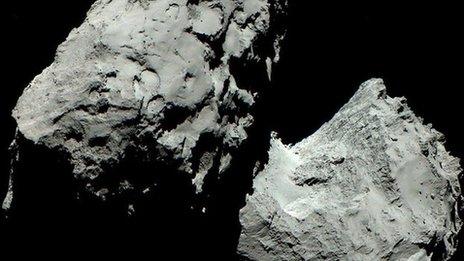Rosetta's comet is spinning down
- Published
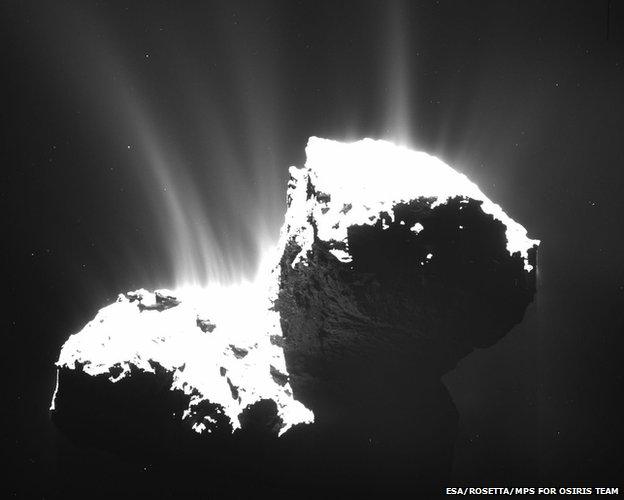
As the comet warms, its ices vaporise and throw jets of gas and dust into space
The comet being observed by Europe's Rosetta satellite is very gradually spinning down.
The icy dirt-ball takes 12.4 hours to complete one rotation, but mission controllers have noticed that this is extending by about a second a day.
And this rate of change is increasing as Comet 67P gets more active.
"The gas jets coming out of the comet - they are acting like thrusters and are slowing down the comet," said flight director Andrea Accomazzo.
The European Space Agency official was speaking this week at the Royal Aeronautical Society, external in London.
He was describing how his team has learnt to fly Rosetta, external around the 10-billion-tonne, 4km-wide body with remarkable precision.
Navigators use a system of landmarks on the comet to understand how it is rotating and moving through space.
This information is fed into a model that helps plan a trajectory for the satellite.
And it was while running this model that the Esa team realised the landmarks were not quite turning up in the right place at the expected time.
In September last year, it was determined that the rotation period was extending by 33 milliseconds per day. Now, with the comet moving closer to the Sun and throwing out much larger volumes of gas and dust, this spin-down effect is approaching a second a day.
"OK, it's not going to slow down completely - but this gives you an order of magnitude for the accuracy we're now achieving with the navigation of the spacecraft around the comet," said Accomazzo.
'Big sail'
During December and January, Rosetta was able to move to within 30km of Comet 67P and go into a gravitationally bound orbit.
This is no longer possible and Rosetta has retreated.
"The aerodynamic effects are now more and more important. The jets are getting stronger and stronger," the Esa flight director told BBC News.
"To give you an idea, these gases come out of the comet for a few kilometres and are moving at 800 metres per second.
"We definitely have to take this into account. We are a big spacecraft with 64 square metres of solar panels. We're like a big sail."
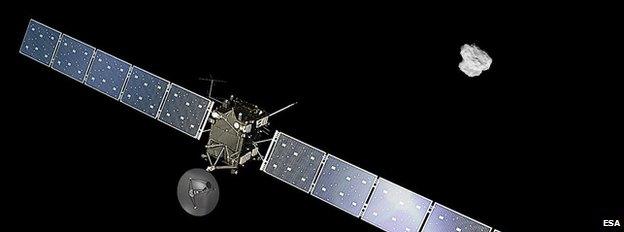
Rosetta's big solar arrays act like a sail in the jets
In recent weeks, the dust in the environment around the comet has even confused the star trackers that Rosetta uses to work out its orientation. The trackers thought the dust particles were stars.
Using its propulsion system, Rosetta is currently flying hyperbolic orbits around 67P, generally coming no closer than about 60km or 70km.
'Fifty-fifty'
The science team is, however, preparing some closer flybys.
One of these, in July, could go as close as 20km, and may be used to picture the surface to try to find Rosetta's lost landing probe, Philae.
The little robot has been unresponsive since losing battery power a couple of days after touching down on 12 November.
Having previously said it would not run another dedicated imaging campaign to try to detect Philae, Esa believes the forthcoming opportunity may actually be quite a favourable one for a search.
Illumination conditions will be much improved at its suspected resting place - certainly, compared with previous campaigns.
Andrea Accomazzo said controllers were now using Rosetta to make radio "shout outs" to Philae, external, hoping that enough sunshine will soon fall on the lander's solar panels to reboot it: "The problem is that even if Philae hears Rosetta, it has to have enough charge to turn on its radio transmitter."
The flight director is a little pessimistic that Philae will get enough energy to come back to life. "I put it at 50-50, but I will be the happiest person in the world if it happens."

Comet 67P - "Space duck" in numbers

The Science papers include some key stats on the comet
A full rotation of the body takes just over 12.4 hours
The axis of rotation runs through the "neck" region
Its larger lobe ("body") is about 4.1 × 3.3 × 1.8 km
The smaller lobe ("head") is about 2.6 × 2.3 × 1.8 km
Gravity measurements give a mass of 10 billion tonnes
Mapping estimates the volume to be about 21.4 cubic km
The density works out at about 470kg per cubic metre
This would imply that Comet 67P is highly porous
It is 70-80% empty space, but are there big voids inside?
Daytime surface temperatures range from -93C to -43C
Amount of incident light reflected (albedo) is just 6%

Jonathan.Amos-INTERNET@bbc.co.uk and follow me on Twitter: @BBCAmos, external
- Published17 March 2015
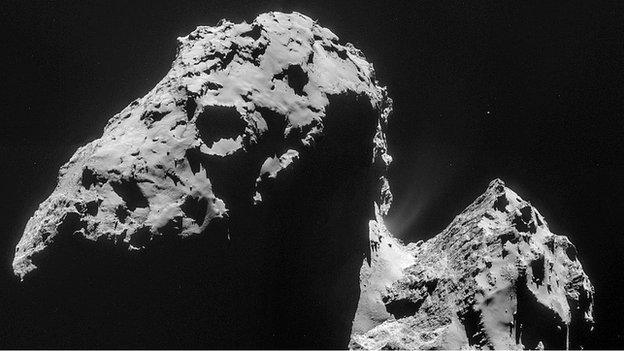
- Published10 December 2014
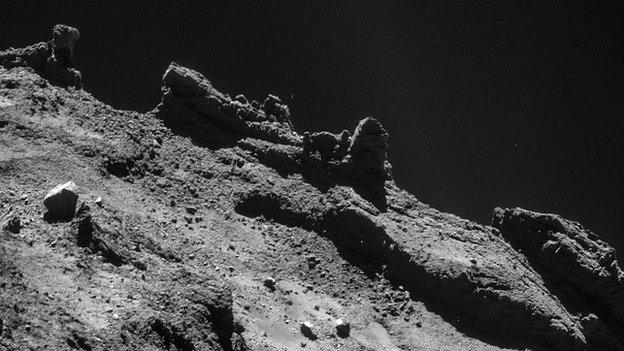
- Published22 January 2015
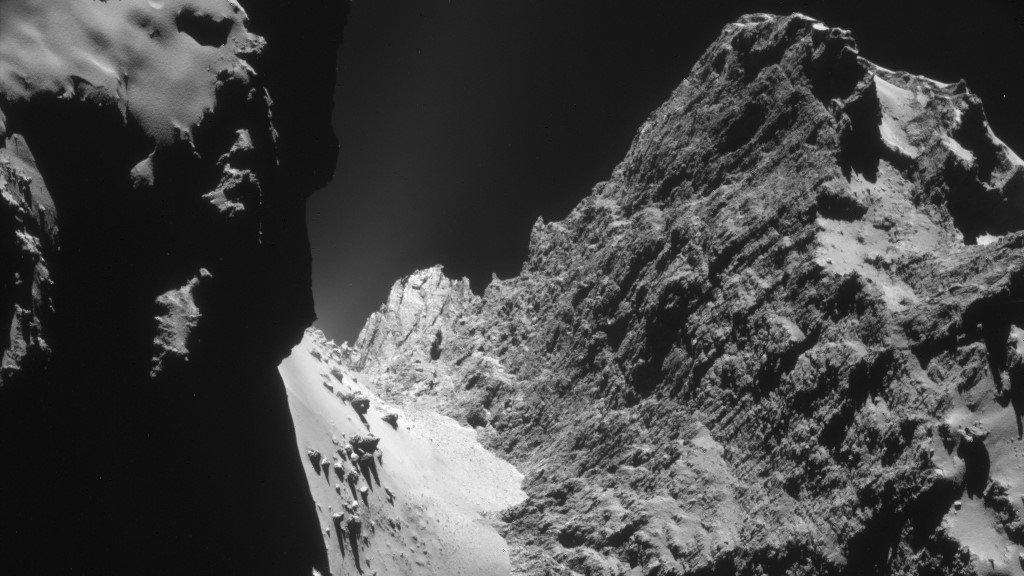
- Published12 December 2014
